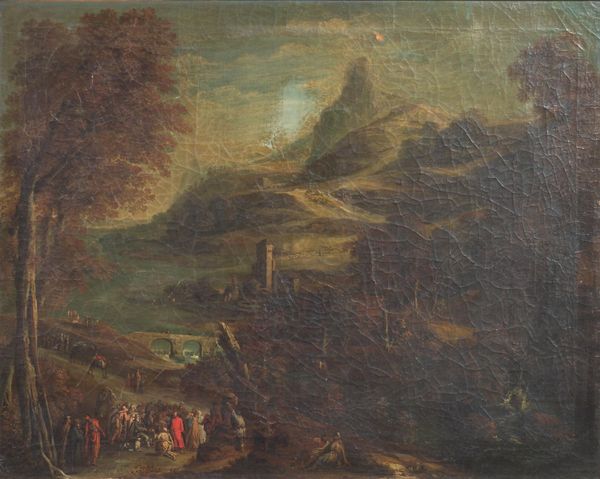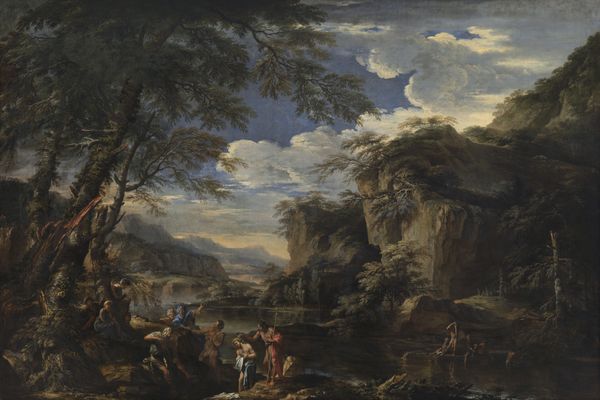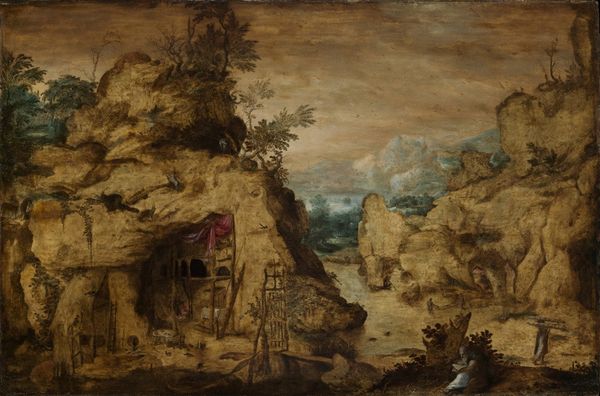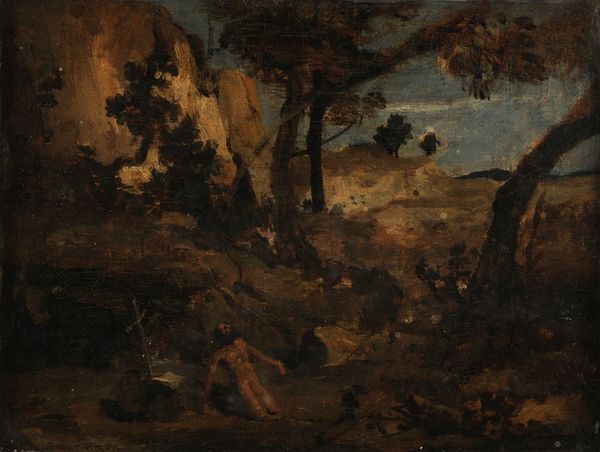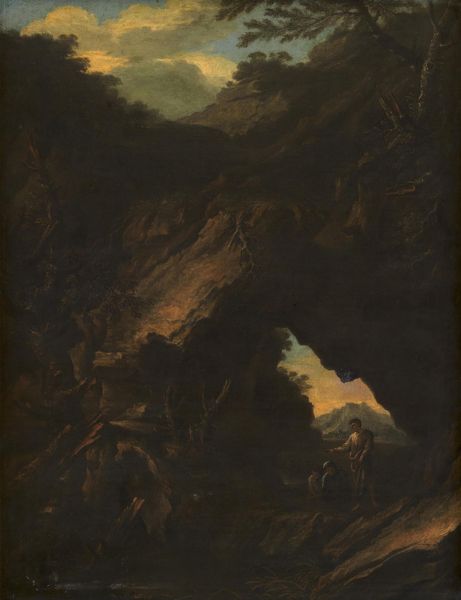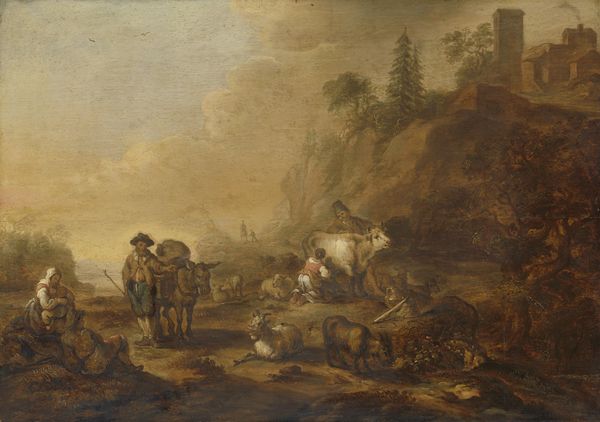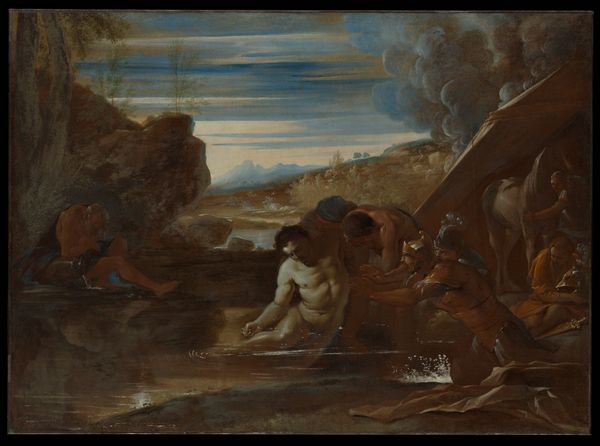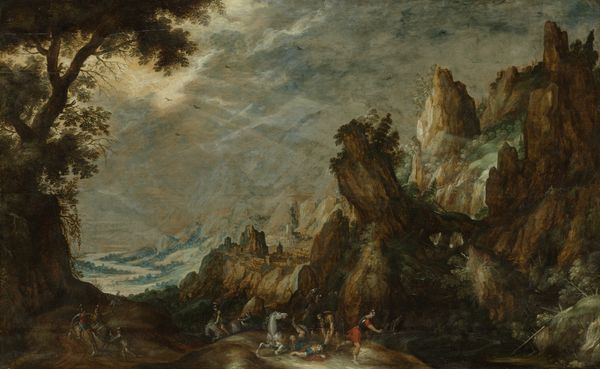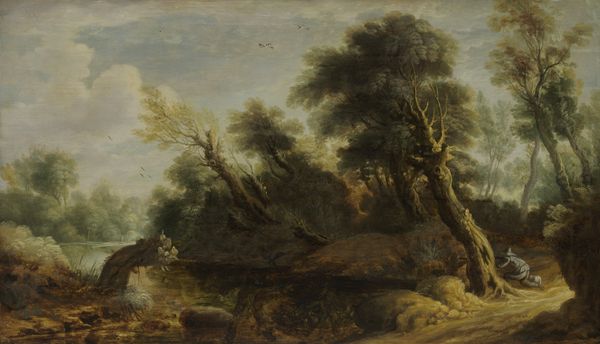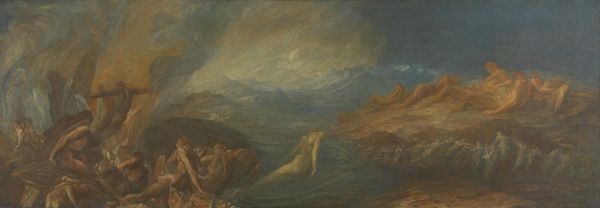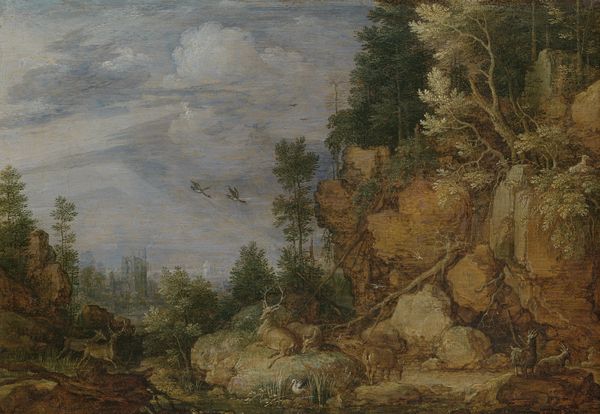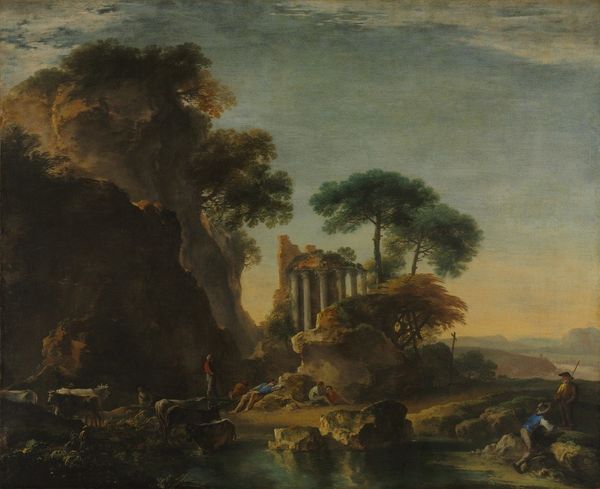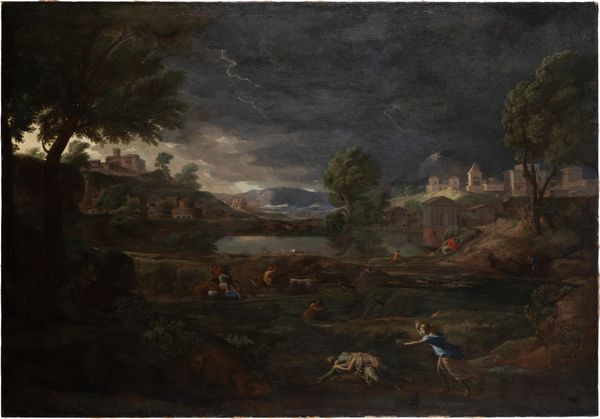
painting, oil-paint
#
neoclacissism
#
painting
#
oil-paint
#
landscape
#
oil painting
#
history-painting
#
academic-art
Dimensions: 94 x 138 cm
Copyright: Public domain
Curator: The artwork before us, titled "Scene from Roman history," is attributed to Vincenzo Camuccini and executed using oil paint. Editor: It's initially striking, but somewhat murky, almost theatrical. The rocky landscape dwarfs the figures engaged in what looks like a fierce battle. The dominance of brown, ochre and sepia give it a serious atmosphere. Curator: Indeed, Camuccini adopts a muted palette characteristic of the Neoclassical movement. Observe how the artist has employed chiaroscuro to heighten the drama, spotlighting certain figures while others are cast into shadow. We also observe that landscape is quite present, almost in a romantic, and surely, scenographic way. Editor: It seems that the placement of the light emphasizes a hero emerging. Looking at it, I am curious, beyond the aesthetic impression: what narrative are we seeing? Are there underlying messages? Is Camuccini glorifying war or pointing to a larger commentary on political ideals of its time? Curator: Analyzing the composition, the figures are arranged in a classical frieze-like manner, echoing ancient Roman relief sculptures. There’s also an effort in presenting anatomical correctness. This approach, where art aspires to moralizing historical narratives, was key to the Neoclassical philosophy. Editor: Considering it was not created on the actual antique, but in modern times, one must understand this painting also as a commentary about power, national identities, and perhaps also personal struggles mirrored in the historical context, to see who financed its commission, etc. All these are intertwined here! Curator: You rightly highlight the layers of historical, societal and visual dialogues that take place in this piece. From its structured use of colour and figurative organization, we perceive the artist aiming at didactic storytelling. Editor: Understanding "Scene from Roman History" requires we appreciate both its artistic structure and the conditions in which it was received, adding nuance to the way we grasp historical events.
Comments
No comments
Be the first to comment and join the conversation on the ultimate creative platform.
